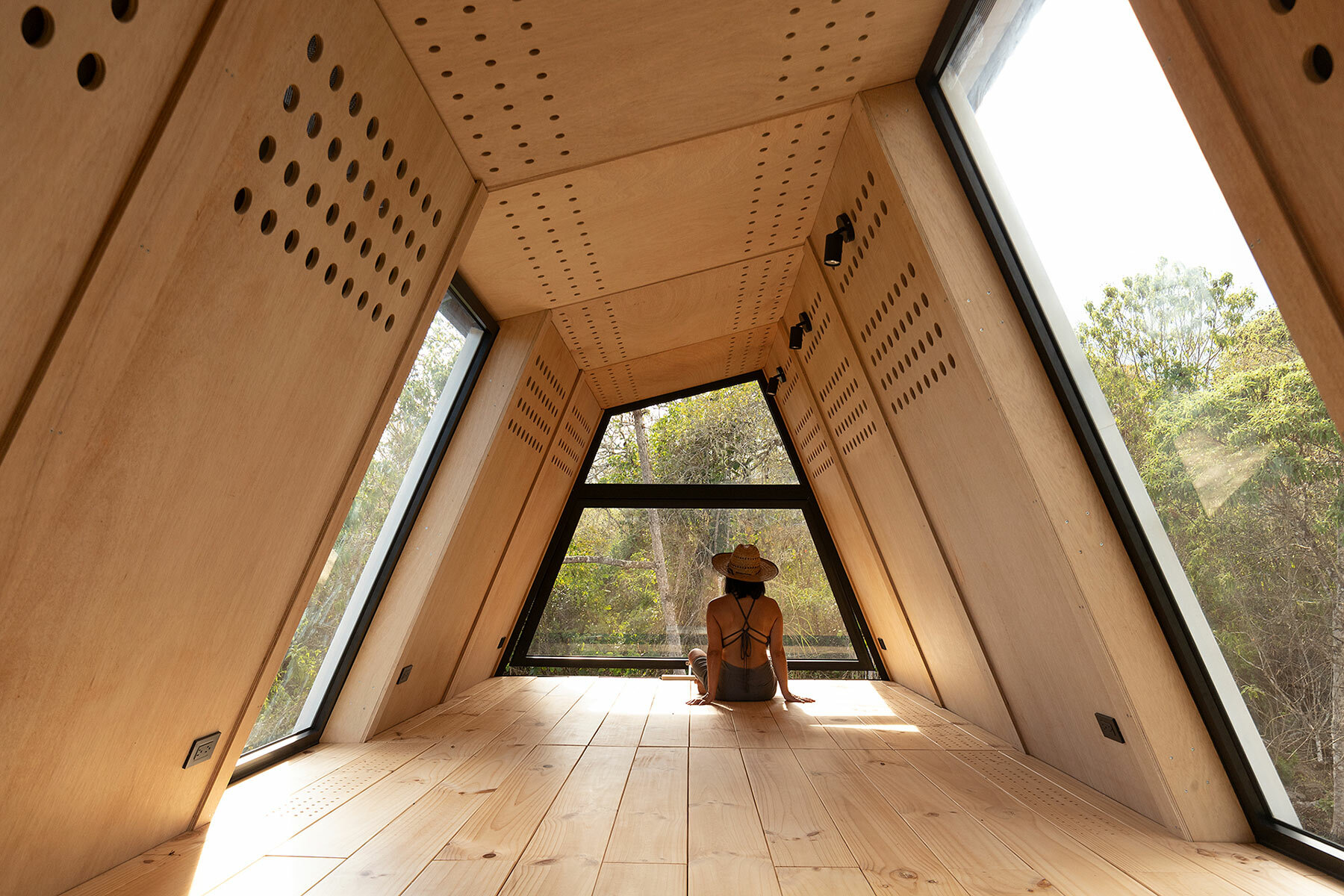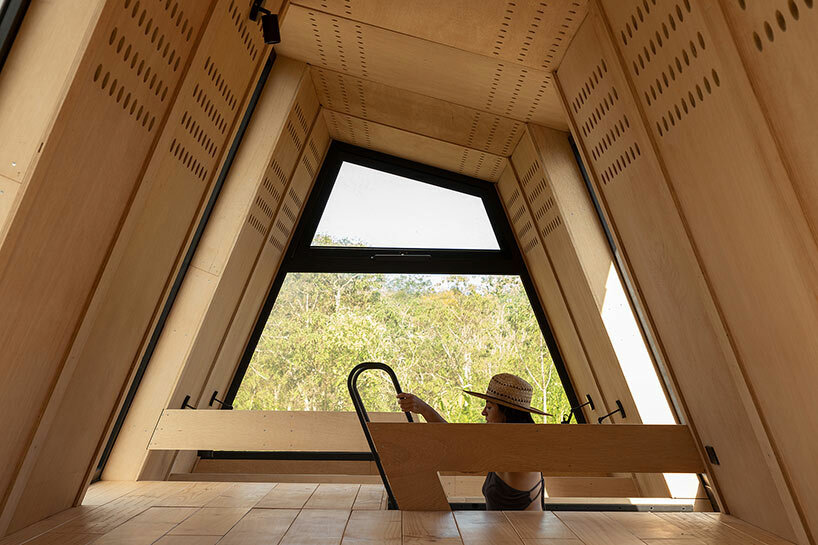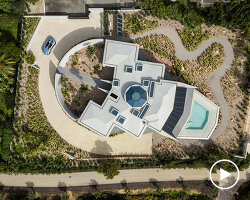
the design by Diana Salvador promotes collective well-being while minimizing carbon footprint

plywood makes up the structure, interior walls, furniture, and ceiling
KEEP UP WITH OUR DAILY AND WEEKLY NEWSLETTERS
PRODUCT LIBRARY
with its mountain-like rooftop clad in a ceramic skin, UCCA Clay is a sculptural landmark for the city.
charlotte skene catling tells designboom about her visions for reinventing the aaltos' first industrial structure into a building designed for people.
'refuge de barroude' will rise organically with its sweeping green roof and will bring modern amenities for pyrenees hikers.
spanning two floors and a loft, the stitled design gave room for a horizontal expanse at ground level, incorporating a green area while preserving the natural slope.

 images ©
images ©  to minimize concrete use, gavions were employed as foundations
to minimize concrete use, gavions were employed as foundations

 the home is built of wood, stone, metal, glass, and PVC
the home is built of wood, stone, metal, glass, and PVC













































